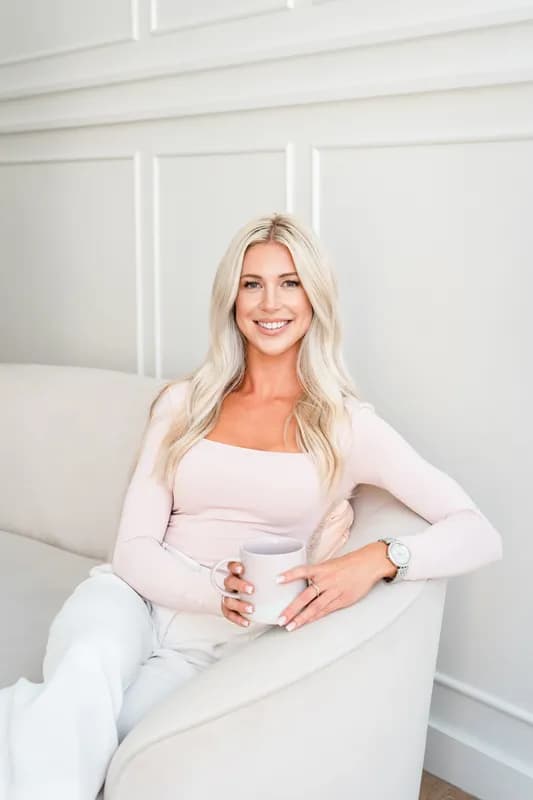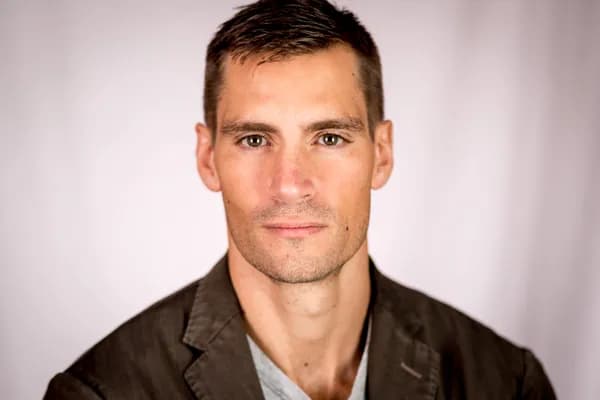Therapy for attachment healing

You may notice the same painful patterns in your relationships such as pulling away when someone gets close, clinging when you fear distance, or choosing partners who hurt you. These are not flaws but attachment wounds shaped by early experiences. The encouraging truth is that attachment can heal, and therapy can help you build the secure connections you deserve.
Understanding attachment and healing
What attachment means
Attachment is the early blueprint you form for relationships based on how your caregivers responded to you. Consistent care builds secure attachment, a sense that people are dependable and your needs matter. Inconsistent, dismissive, or frightening care leads to protective strategies that once kept you safe but now limit connection. Psychologists describe patterns such as secure, anxious, avoidant, and disorganized, and most people lean toward one style especially during stress.
How insecure attachment affects adult life
Attachment shapes how you choose partners, handle conflict, express needs, and view yourself in relationships. Anxious attachment may lead to fear of rejection and constant reassurance seeking. Avoidant attachment may create discomfort with closeness and a tendency to shut down. Disorganized attachment often brings both longing and fear which can lead to mixed signals and chaotic dynamics. These patterns are not deliberate choices but learned survival responses from early life.
Attachment patterns in Canadian adults
Source: Meng X., D’Arcy C. & Adams G.C. “Associations between adult attachment style and mental health care utilisation: Findings from a large-scale national survey.” Psychiatry Research 229(1–2):2015.Full-text PDF
The impact of insecure attachment
Relationship patterns and struggles
Insecure attachment often leads to repeating the same relationship patterns such as choosing emotionally unavailable partners or pushing away healthy ones. You may cling, withdraw, or sabotage closeness without meaning to, leaving partners feeling unsure how to connect with you. Relationships may swing between intense closeness and painful distance or never reach real intimacy despite time together.
Emotional regulation challenges
Without early consistent support, managing emotions in adulthood becomes difficult. Minor conflicts can feel overwhelming, leading to intense anxiety, anger, or emotional numbness. Research links insecure attachment to regulation difficulties which can contribute to impulsive coping behaviours, substance use, or self-harm.
Self-worth and identity issues
Attachment wounds shape deep beliefs about who you are. Anxious attachment may create feelings of being unlovable or too much while avoidant attachment may lead to beliefs that emotions are unsafe or that needing others is weakness. These beliefs feel true but are learned adaptations that limit connection, confidence, and self-acceptance.
Difficulty trusting and vulnerability
When early caregivers were unreliable or frightening, trust becomes hard. You may test partners, look for signs of rejection, or stay guarded even in committed relationships. Being vulnerable by sharing real feelings or needs can trigger fear because it once felt unsafe. This protects you but also keeps you lonely and disconnected from the closeness you want.
How therapy heals attachment wounds
Creating corrective emotional experiences
Healing attachment wounds happens through new, healthier relational experiences. In therapy, you receive what you missed early in life such as consistent support, emotional attunement, and validation. This safe connection helps your nervous system learn that relationships can be secure, your needs can be met, and vulnerability does not lead to rejection. Over time, these experiences create earned secure attachment and reshape how you relate to others.
What attachment therapy involves
Attachment therapy begins by exploring your early relationships and how you learned to meet needs or protect yourself. You then look at how these patterns appear today such as who triggers anxiety or withdrawal and what beliefs shape your responses. The therapeutic relationship becomes a space to experience consistency, emotional safety, and healthy repair, which gradually reshapes your expectations of connection. As you apply these insights in your daily life, you build more secure and grounded patterns in your relationships.
Therapeutic approaches for attachment healing
Attachment-Based Psychotherapy
This approach focuses on healing attachment patterns through the therapy relationship itself. Your therapist offers consistent presence and emotional attunement so you can experience reliability, safety, and worth. Over time, this becomes a model for healthier relationships outside therapy.
Emotionally Focused Therapy (EFT)
EFT views relationship challenges through an attachment lens. You explore the emotions and needs driving your reactions and learn to express them clearly rather than through protest or withdrawal. In couples work, EFT helps partners understand each other's attachment needs and build more secure, responsive bonds.
Internal Family Systems (IFS)
IFS helps you understand different parts of yourself such as anxious parts that fear abandonment or avoidant parts that shut down. By building compassionate relationships with these parts and understanding their protective roles, you begin to integrate them and heal the early wounds they carry.
Somatic and body-based therapies
Because attachment patterns live in the nervous system, somatic therapies help you notice and regulate the physical responses triggered by closeness, fear, or disconnection. Approaches like Somatic Experiencing or Sensorimotor Psychotherapy support physiological safety, which is essential for developing secure attachment, especially when trauma is involved.
Schema Therapy
Schema therapy targets deep beliefs shaped by early attachment experiences such as fears of abandonment, mistrust, or feeling defective. You learn to identify when these beliefs are activated, challenge them, and replace them with healthier perspectives. The therapist offers “limited reparenting” to provide corrective emotional experiences.
EMDR and trauma processing
EMDR helps process traumatic memories linked to attachment wounds such as neglect or frightening caregiving. By reducing the emotional intensity of these memories, EMDR allows you to feel safer in relationships and supports healing for disorganized attachment patterns rooted in trauma.
The journey of attachment healing
Assessment and attachment mapping
Early sessions focus on understanding your attachment history such as how caregivers responded to your needs and how those experiences shape your current patterns with intimacy, conflict, and trust. You may explore questionnaires or relationship examples to clarify your style. The goal is not to label you but to create a clear map of why relationships have been difficult which often brings relief and self-understanding.
Building the therapeutic relationship
Healing begins as your therapist offers consistent presence, emotional attunement, and validation, creating a secure base that may feel unfamiliar at first. You might withdraw, grow anxious, or test whether they will stay which is expected in attachment work. Over time, experiencing reliable care helps you internalize a sense of safety that becomes the foundation for healthier relationships.
Processing attachment wounds
As therapy deepens, you begin processing early pain such as unmet needs, neglect, or fear. You explore grief, anger, and long-avoided emotions in a safe space. Your therapist helps you feel these experiences without being overwhelmed, teaching your nervous system that emotions are survivable and that someone can stay present with you through difficult feelings.
Developing new patterns in relationships
With growing security, you practise new relational behaviours such as expressing needs clearly, staying present during intimacy, tolerating distance, choosing healthier partners, and trusting with appropriate boundaries. You reflect on these experiences in therapy, gradually strengthening new pathways so secure relating begins to feel natural rather than foreign.
Timeline and earned secure attachment
Attachment healing takes time, often twelve to twenty-four months, though early changes may appear within a few months as you catch old patterns and choose differently. Larger shifts usually emerge after sustained work. Earned secure attachment means forming healthier relationships, regulating emotions more easily, trusting appropriately, and staying connected without losing your sense of self, even if moments of insecurity still arise.
Find a therapist who specializes in attachment healing
Choosing the right therapist matters. Each province in Canada has its own regulations, which is why working with a recognized professional can make a real difference in your care. Stellocare takes the uncertainty out of the process by listing only verified therapists you can trust.
The right therapist for you
No therapists found with these specialties in Ontario.
Try selecting a different province.Resources and strategies for healing attachment
Canadian attachment healing resources
Attachment-focused clinical and consultation services
Attachment Consultation and Education Service (Ontario)offers attachment focused and trauma informed behavioural support and consultation for children and youth with significant attachment difficulties, along with training and workshops for caregivers and professionals in Ontario.
Parenting and caregiver attachment programs
Connect Attachment Programis a Canadian attachment based program for parents and caregivers of adolescents that helps strengthen secure attachment, improve communication and repair relationship strains.Strides Toronto – Circle of Security Parenting groupsandNew Path Youth and Family Services – Circle of Securityoffer Circle of Security parenting groups in Ontario where caregivers learn how to respond to children in ways that build security and heal attachment disruptions.
Infant and early years attachment programs
George Hull Centre – Baby Love program (Toronto)provides an attachment based group for parents and caregivers of infants where they learn how to help babies feel secure, manage stress and build a strong emotional bond.ROCK – Reach Out Centre for Kids (Halton)runs parent and caregiver groups that include attachment focused parenting and support to strengthen the parent child relationship.
Young parent and family attachment services
Youville Centre (Ottawa)is a non profit centre for young mothers that offers attachment based parenting programs with intervention and treatment to support secure attachment between mothers and their children.Strong Families (Circle of Security and Triple P study sites)supports families with children aged two to six and uses Circle of Security as one of its core programs to improve child caregiver attachment and reduce challenging behaviours.
Daily practices for building security
Developing self-awareness and insight
- Notice your triggers: What situations activate insecurity? Track patterns in a journal to increase awareness.
- Name your attachment responses: "I'm feeling anxious about abandonment" or "I'm withdrawing because intimacy feels threatening." Naming creates distance from automatic reactions.
- Pause before reacting: When triggered, take time before responding. Ask yourself: "Is this response about now or about past wounds?"
- Explore your beliefs: What do you believe about yourself, others, and relationships? Where did these beliefs come from?
Nervous system regulation
- Grounding techniques: When anxious about attachment, ground yourself in the present: name 5 things you see, 4 you can touch, 3 you hear, 2 you smell, 1 you taste.
- Breathing exercises: Slow, deep breathing activates your parasympathetic nervous system, countering attachment panic.
- Body awareness: Notice where attachment feelings live in your body. Chest tightness? Stomach tension? Breathe into those areas.
- Safe place visualization: Create a mental image of a completely safe space. Visit it when feeling insecure.
Building secure attachment in current relationships
- Communicate needs directly: Instead of testing if partners will meet needs, state them clearly: "I need reassurance right now."
- Practice vulnerability gradually: Share small vulnerable things first, building trust through positive experiences.
- Tolerate appropriate distance: When partners need space, practice self-soothing rather than panicking or withdrawing.
- Repair after conflicts: Secure people repair ruptures. Practice apologizing and reconnecting after disagreements.
Self-compassion and reparenting
- Develop a compassionate inner voice: Notice your self-talk. Would you speak to a child this way? Practice gentler internal dialogue.
- Meet your own needs: Instead of always seeking external validation, practice giving yourself what you need: comfort, encouragement, celebration.
- Reparent your inner child: Visualize your younger self receiving the care and attunement you needed. What would that child need to hear?
- Challenge core beliefs: When attachment wounds activate beliefs about unworthiness, actively challenge them with current evidence.
Common questions about attachment healing
Can attachment style really change, or am I stuck with what I have?
Yes, attachment styles can change. Many people naturally shift over time, and therapy makes this even more likely. With consistent support, you can develop earned secure attachment at any stage of life.
How do I know which attachment style I have?
Quizzes can give clues, but therapy offers clearer insight. In general, anxious styles fear rejection, avoidant styles pull away from closeness, disorganized styles mix both reactions, and secure styles feel comfortable with intimacy and independence.
What if my partner has a different attachment style?
Mixed styles can create predictable cycles such as pursuing and withdrawing. Understanding each other's triggers helps break these patterns. Attachment-focused couples therapy strengthens safety and responsiveness in the relationship.
Is attachment healing possible without therapy?
Healing can happen through supportive relationships and self-work, but therapy makes the process faster and safer by offering consistent emotional support and helping you spot patterns you might miss.
What if my childhood was “fine” but I still have attachment issues?
Attachment wounds do not require extreme trauma. Emotional distance, stress, frequent moves, or mismatched caregiving can still shape insecurity. What matters is whether your emotional needs were met consistently.
How does attachment relate to trauma?
Trauma can disrupt attachment, especially when caregivers were frightening or unpredictable. Secure attachment protects against trauma’s effects, while insecure patterns increase vulnerability. Healing often involves trauma work alongside attachment repair.
Will I ever stop being triggered by relationships?
Triggers may still happen, but they become less intense and easier to manage. You learn to notice them, soothe yourself, communicate your needs, and return to calm more quickly so triggers no longer control your behaviour.
Related concerns
References
- Bowlby, J. (1988). A Secure Base: Parent-Child Attachment and Healthy Human Development. Basic Books.
- Groh, A. M., Fearon, R. P., Bakermans-Kranenburg, M. J., Van IJzendoorn, M. H., Steele, R. D., & Roisman, G. I. (2014). The significance of attachment security for children's social competence with peers. Attachment & Human Development, 16(2), 103-136. Retrieved from https://pubmed.ncbi.nlm.nih.gov/24547936/
- Mikulincer, M., & Shaver, P. R. (2012). An attachment perspective on psychopathology. World Psychiatry, 11(1), 11-15. Retrieved from https://pmc.ncbi.nlm.nih.gov/articles/PMC3266769/
- Diamond, G. S., Wintersteen, M. B., Brown, G. K., Diamond, G. M., Gallop, R., Shelef, K., & Levy, S. (2010). Attachment-based family therapy for adolescents with suicidal ideation. Journal of the American Academy of Child & Adolescent Psychiatry, 49(2), 122-131. Retrieved from https://pubmed.ncbi.nlm.nih.gov/37644809/
- International Centre for Excellence in Emotionally Focused Therapy (ICEEFT). (2024). Home. Retrieved from https://iceeft.com/
- Circle of Security International. (2024). Home. Retrieved from https://www.circleofsecurityinternational.com/
- Somatic Experiencing Trauma Institute. (2024). Find a Practitioner. Retrieved from https://traumahealing.org/
- Levine, A., & Heller, R. (2010). Attached: The New Science of Adult Attachment and How It Can Help You Find—and Keep—Love. TarcherPerigee.
- Johnson, S. M. (2008). Hold Me Tight: Seven Conversations for a Lifetime of Love. Little, Brown and Company.
About Stellocare
Stellocare is a Canadian platform where you can find the best fit therapist for you. Search the right thperaists now by asking our AI, browsing our list, or finding our social workers for personal referral.

Mackenzie Fournier
Registered Psychotherapist (ON)

Shiny Yang
Occupational Therapist (ON)

Cameron Whatram
Registered Clinical Counsellor (BC)

Claudia Dargis
Registered Psychotherapist (ON)

Raluca Petridis
Registered Psychotherapist (ON)

Shannon Gallagher
Canadian Certified Counsellor

Rex Cheung
Registered Social Worker (ON)

Ivana Di Cosola
Registered Social Worker (ON)

Riffat Yusaf
Registered Psychotherapist (ON)

Cindy Rose
Registered Psychotherapist (ON)

Emily Hiram
Registered Psychotherapist (ON)

Amelia Henriquez
Registered Psychotherapist (Qualifying) (ON)

Marla Soubhie
Registered Psychotherapist (Qualifying) (ON)

Kemelle Deeble
Registered Psychotherapist (Qualifying) (ON)

Yuansheng Lu
Registered Psychotherapist (Qualifying) (ON)

Delia Petrescu
Registered Psychotherapist (ON)

Tina Bells
Registered Psychotherapist (ON)

Sze Nga Cecilia Au Yeung
Registered Social Worker (ON)

Abby Molloy
Registered Psychotherapist (Qualifying) (ON)

Liz Hagerty
Registered Social Worker (BC)

Mackenzie Fournier
Registered Psychotherapist (ON)

Shiny Yang
Occupational Therapist (ON)

Cameron Whatram
Registered Clinical Counsellor (BC)

Claudia Dargis
Registered Psychotherapist (ON)

Raluca Petridis
Registered Psychotherapist (ON)

Shannon Gallagher
Canadian Certified Counsellor

Rex Cheung
Registered Social Worker (ON)

Ivana Di Cosola
Registered Social Worker (ON)

Riffat Yusaf
Registered Psychotherapist (ON)

Cindy Rose
Registered Psychotherapist (ON)

Emily Hiram
Registered Psychotherapist (ON)

Amelia Henriquez
Registered Psychotherapist (Qualifying) (ON)

Marla Soubhie
Registered Psychotherapist (Qualifying) (ON)

Kemelle Deeble
Registered Psychotherapist (Qualifying) (ON)

Yuansheng Lu
Registered Psychotherapist (Qualifying) (ON)

Delia Petrescu
Registered Psychotherapist (ON)

Tina Bells
Registered Psychotherapist (ON)

Sze Nga Cecilia Au Yeung
Registered Social Worker (ON)

Abby Molloy
Registered Psychotherapist (Qualifying) (ON)

Liz Hagerty
Registered Social Worker (BC)

